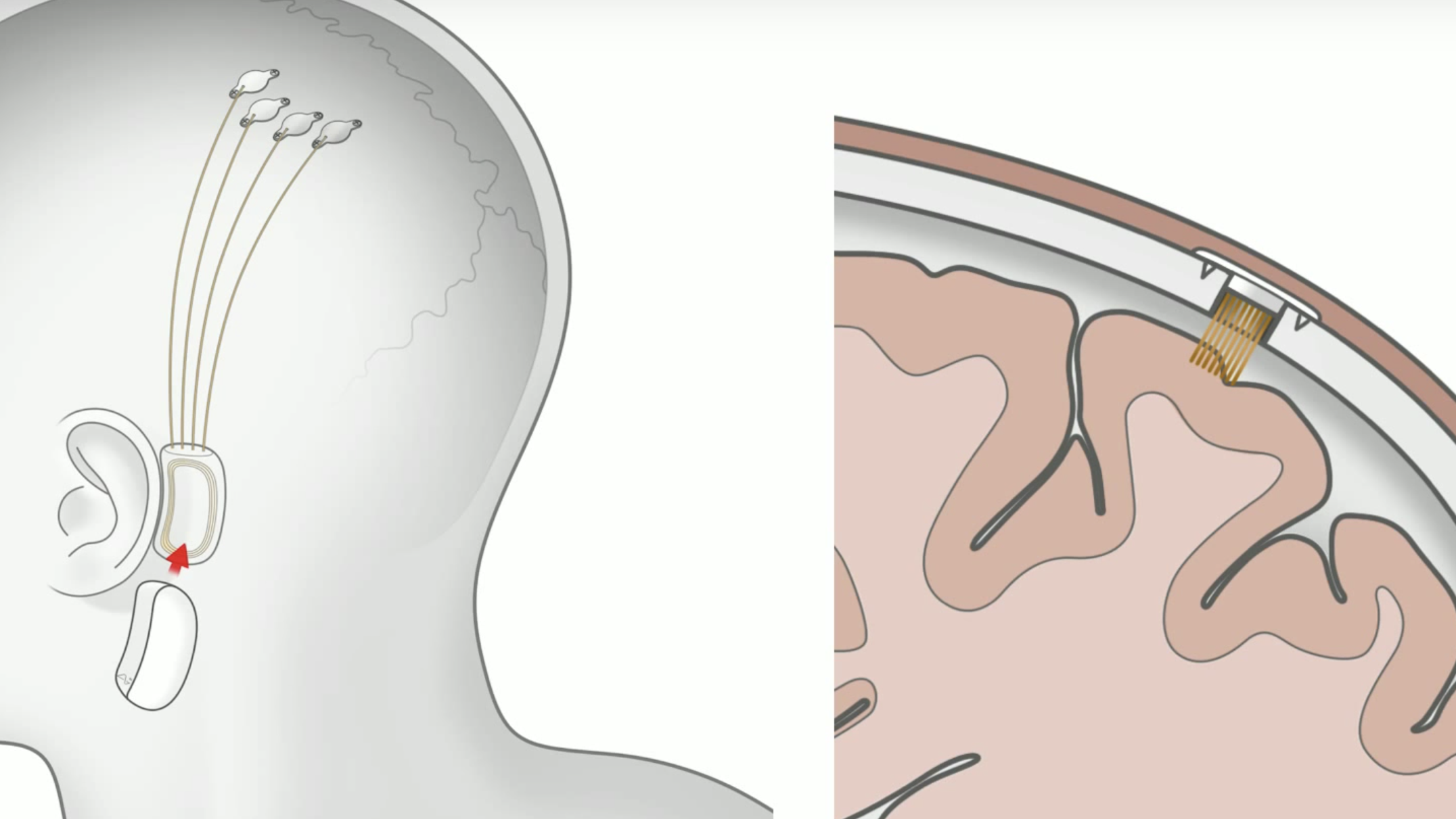Elon Musk says Neuralink AI brain chips could be tested on humans by this summer
These embeddable brain-computers are closer than you think

Remember when Elon Musk unveiled his plan in July to implant computer interfaces in brains using laser beams? Well the Tesla CEO says it will happen by the end of this year.
Musk shared new details about Neuralink, the firm developing this sci-fi technology, via Twitter on Sunday. He said the next version of the company’s invasive N1 brain chips will be “awesome” and could be tested on humans as soon as this summer.
“The profound impact of high bandwidth, high precision neural interfaces is underappreciated,” Musk shared during an impromptu Neuralink Q&A session. “Neuralink may have this in a human as soon as this year. Just needs to be unequivocally better than Utah Array, which is already in some humans & has severe drawbacks.”
What is Neuralink?
Neuralink scientists have developed an embeddable chip that places threads over 1,024 electrodes in the brain. The chips are wired to an inner inductive coil near the human ear, and connect to a battery-powered Bluetooth link that rests outside the skin. Together, the interface lets the wearer communicate with a computer or smartphone.

The N1 promises a better linkup solution than existing devices, namely industry standard Utah Array. Utah Array connects to less electrodes using microneedles and is used to study neurological conditions like epilepsy, but implanting it requires partial skull removal.
When Musk debuted Neuralink last summer, the firm’s team described its device as a robot capable of stitching probes into the brain. Using a 2-millimeter incision, it can allegedly embed the chip in and seal the cut shut in under an hour.
Musk calls the process a “high precision micro-electrode insertion that automatically avoids the vasculature.”
Sign up to get the BEST of Tom's Guide direct to your inbox.
Get instant access to breaking news, the hottest reviews, great deals and helpful tips.
Augmenting our brains — and fighting the singularity
Neuralink’s mission is mostly medical, with Musk saying the chips will, “ultimately be used to make up for entire lost sections of the brain due to stroke/accident/congenital."
"Don’t want to get too excited, but the potential is truly transformational for restoring brain & motor functions,” Musk said. “There is no other way to do it imo."
Musk has also suggested Neuralink’s technology could be used to prevent A.I. from outsmarting humans down the line. He believes linking our brains to computers directly would prevent A.I. from becoming irreversibly unstable. Rather, humans would be capable of digital "superintelligence."
Yes, it’s as bizarre as it sounds. And am I terrified that the man whose current Twitter bio reads “Born 69 days after 4/20” is on the cusp of burying computers in our brains? Definitely. In fact, I’ll probably lose sleep over it.
But as with any of these in-body computers, like Mojo’s AR contact lenses, there’s several hoops that are necessary to jump through before patients can be linked up. The process could take years, and making the technology available to the general public typically takes years more after that.
Kate Kozuch is the managing editor of social and video at Tom’s Guide. She writes about smartwatches, TVs, audio devices, and some cooking appliances, too. Kate appears on Fox News to talk tech trends and runs the Tom's Guide TikTok account, which you should be following if you don't already. When she’s not filming tech videos, you can find her taking up a new sport, mastering the NYT Crossword or channeling her inner celebrity chef.

